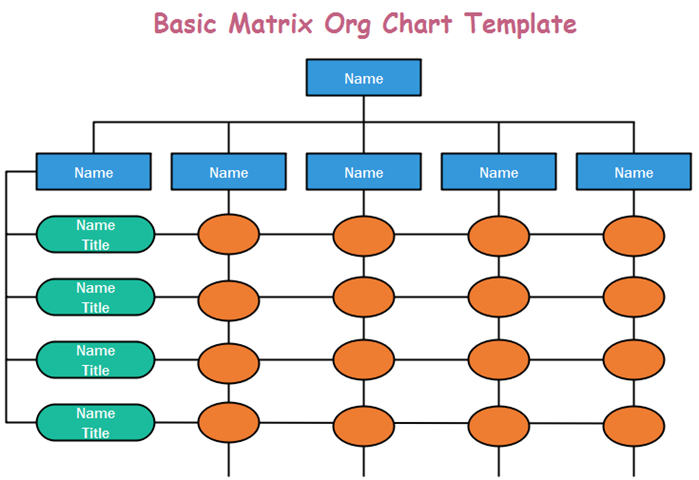Org chart can be classified into two types: vertical and horizontal, based on the style of the layout. A vertical org chart looks like a pyramid. At the top is the CEO or company president. A single segment consists of a series of middle management and the manager who is responsible for their department. In contrast, a horizontal org chart has no middle management, hence normally all employees need to report to only one manager. Such type is also called the flat org chat. This article is going to explain the most significant differences between vertical org chart and horizontal org chart in terms of decision-making, collaboration, and communication.
Figure 1. Vertical Org Chart Example
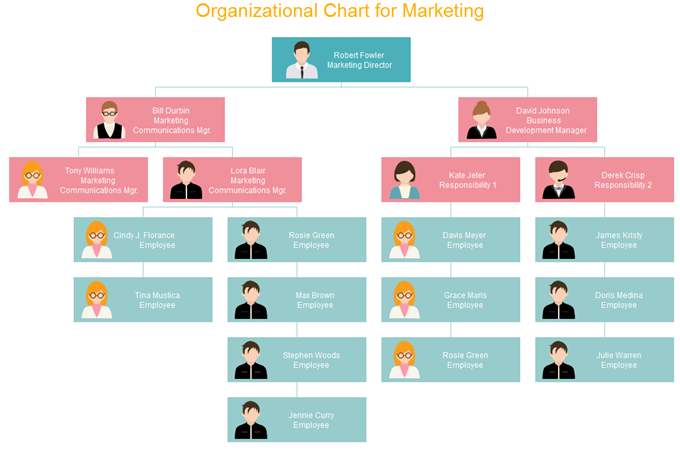
The functional org chart is a popular organizational diagram usually implemented by small business companies. In this structure, an organization can be grouped into separated departments by areas of specialty or function. Those departments are vertical and disconnected from each other.
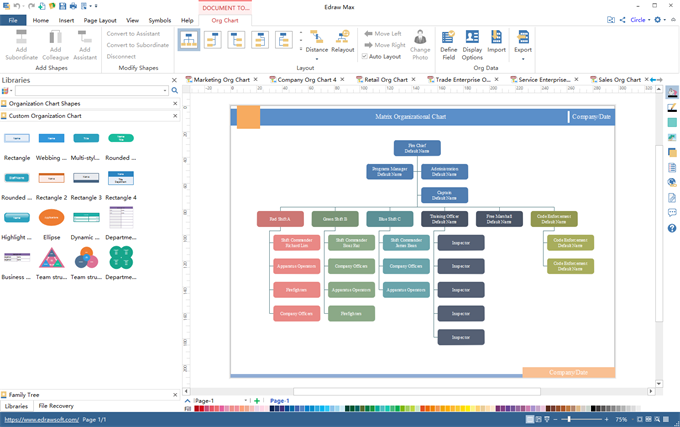
- More Easy Org Chart Creatorfor Professionally Managing Your Business Teams
The functional org chart is one of several common organizational structure diagrams many companies have adopted and a clear depiction of how people are organized. Wherein employees are segmented based on their skills and specialties. Usually, people are grouped into departments and made to report to and follow their department manager. Each functional manager is responsible for supervision and direction with his or her department subordinates. This article aims for an explanation of functional org chart by five characteristics.
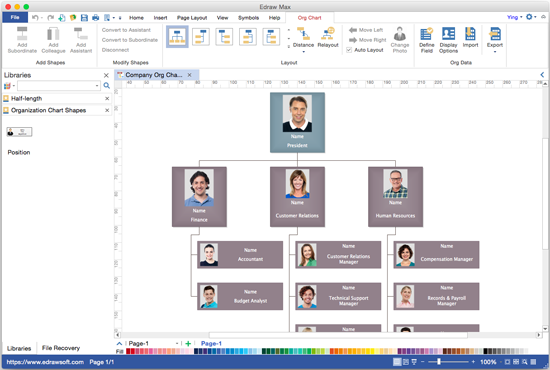
- More Easy Org Chart Creatorfor Professionally Managing Your Business Teams
It Fits Small Companies Well
As for small companies, their functional org charts get low hierarchy layers, therefore, it’s concise and clear which can make the company operate efficiently. Functional org chart performs well when the hierarchy layer is less than four. While as the company expands to a very large one, functional org chart would be much more complicated and redundant even cause bureaucracy which would make it hard to management and organization to respond to outer market quickly.
The horizontal org chart is a type of org chart that is set horizontally which is opposite of vertical org chart. The horizontal org chart has just the same function as other org charts do except the approach of the layout. Of course, you can turn a horizontal org chart into a vertical easily by changing the layout. When we make an org chart with fewer levels, it does not matter whether it is horizontal or vertical. Whoever if the org chart has many layers, it’s better to make it horizontal than vertical for high readability as well as good-looking appearance. Besides, there are more types of org chart like matrix org chart and functional org chart.
Here we present several horizontal org chart templates:
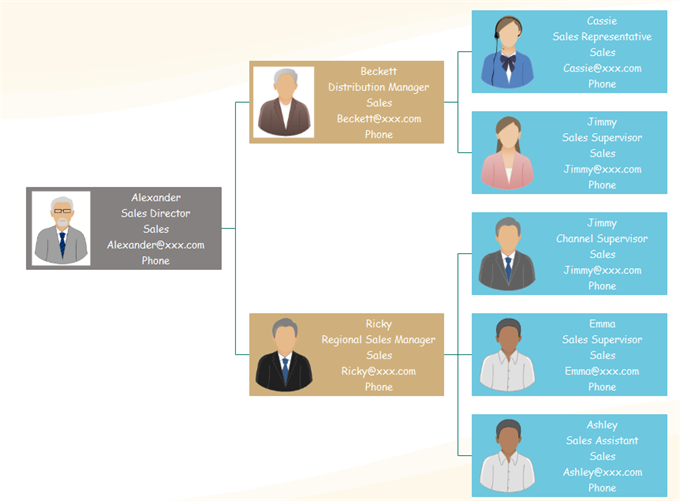
The functional org chart is a traditional type of org chart many companies adopt. Under this organizational structure, workers are divided into several departments based on expertise and function each person can perform.
Workers are required to get involved in duties within their departments and they have to report to their functional managers only. The functional org chart does not have a project manager role, which differentiates from matrix org chart where employees need to obey orders from both functional managers and project managers if employees are working on some projects. The figures below are some common functional org chart templates.
Functional Org Chart Baic Concept
The functional org chart is a very common organizational structure that many companies follow, which is supposed to divide people into several departments according to peoples’ specialties and function they perform in the company. Persons with rich experience and profession would be appointed as department manager authorized to be totally responsible for department’s affair such as training, the task allocating and promotion.

Definition of Functional Org Chart
The functional org chart divides people into different groups based on expertise and specialty. This structure gets involved in a great amount of process standardization within a company, with the real decision-making authority centered at the top of the organization. Employees in one department are responsible only for relevant tasks. For instance, an HR department that focuses only on recruitment & training, a sales department that only engages in sales activities, and an engineering department that only designs products and produces facilities.

There is at least one hotel can be found in almost every city in any developed country. Some of them may be composed of large chains, franchises or privately-owned facilities.
It’s reported that two-thirds of the world market is occupied by service-related industry. In order to carry out its mission, and ensure the smooth operation, every hotel company shall build a formal structure to achieve supervision and the management of employees. We call this very structure org chart. It can indicate the reporting relationships clearly and help to facilitate the working efficiency. The figure above is a good example of hotel org chart.
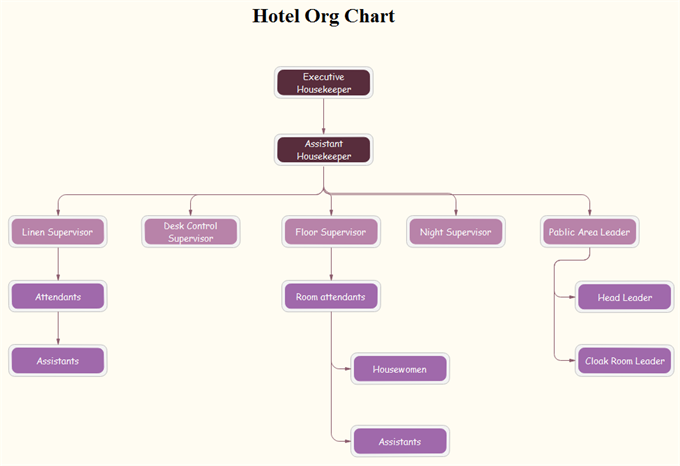
This article is aimed to show how to make the US government org chart. In this example, we use Org Chart Creator, a professional software for org charting drawing. This interface of this software is as similar as that of Microsoft Office. So don’t worry about the manipulation. You can handle it easily as long as you can use office software.
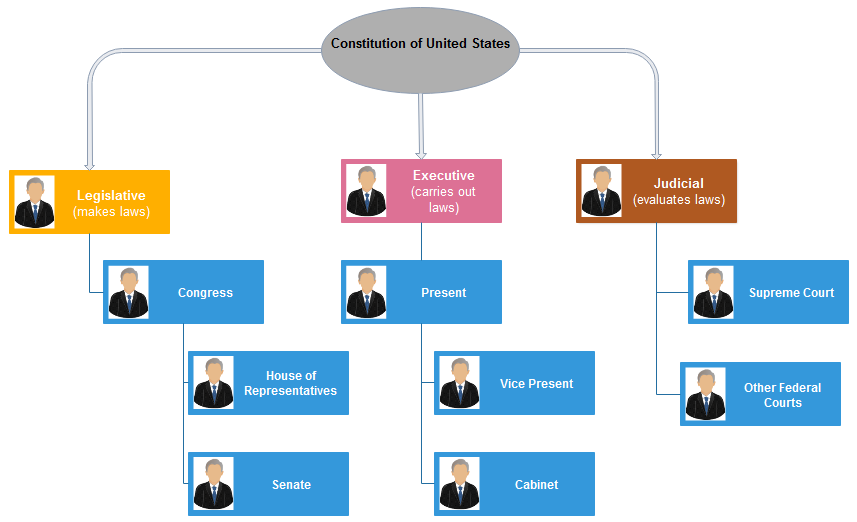
- More Org Chart Templates such as Apple’s org chart, hotel org chart, and hospital org chart
A matrix org chart is one of the most complicated org charts a company can adopt but as well as the most useful one. This article is aimed to make a brief introduction to org chart mainly on definition and advantages. A matrix org chart is a very common organizational structure many companies follow especially the enterprise of the internet industry. It is formed with grid or matrix. Besides hierarchy, employees are divided into teams by projects, which means workers have dual reporting relationship-a functional manager and a project manager.
